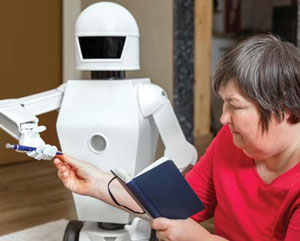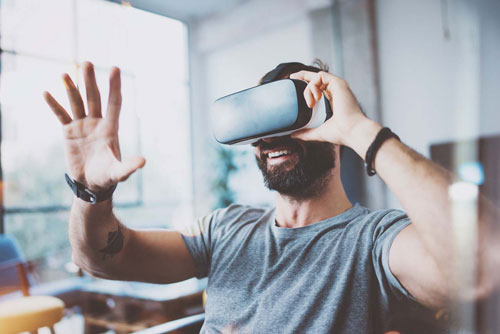Since we launched the Personal Connected Health Alliance (PCHAlliance) in April of 2014, we have seen remarkable progress – and change – in the application of mobile health, writes Rich Scarfo, the vice president of the alliance. For example, text messaging, then the gold standard for delivering health messaging, was being replaced by mobile apps as a means of collecting, transmitting and reviewing personal health data. In fact, from 2014-2017, health and fitness app usage grew by over 330%.
Today, mobile health is on fire – or, should I say FHIR, the Fast Healthcare Interoperability Resources specification, which the standard for exchanging healthcare information electronically. PCHAlliance has incorporated FHIR as an underlying standard in our latest Continua Design Guidelines, enabling integration of patient generated health data (PGHD) into electronic health records to support chronic disease management, improve care delivery and clinical outcomes.
Blockchain is another technology that is taking healthcare by storm. Developed in 2008, it was originally intended to support the exchange of the digital cryptocurrency known as Bitcoin. However, healthcare is embracing this technology as a way to ensure data interoperability and security.
But these technologies are really just the underpinnings of an ecosystem of mobile and digital connected health devices and tools that are truly transforming how care is delivered and how individuals and providers are managing health and wellness. What are really exciting are several important trends and developments in mobile and digital connected health technologies that are impacting how we think about, diagnose, treat and even prevent illness.
Emerging technologies
Artificial intelligence (AI), vocal biomarkers, facial decoding and virtual reality technologies are opening up new opportunity to create highly personalised, intuitive and engaging everyday encounters with one’s health. Companies are exploring artificial intelligence to analyse huge amounts of data in areas such as medical record mining, medication management, genetic and disease prevention research and even drug creation.

Even more interesting is how AI can analyse emotion, anticipate health problems, improve quality of life and enable better relationships with healthcare providers. An excellent example of this is how consumer technologies, like Siri and Alexa, are becoming personal home assistants. Also powered by artificial intelligence, social robots are helping individuals better manage their health, remember to take their medication and even address feelings of loneliness and isolation among older adults.
Virtual reality also has some unique applications in healthcare, including coaching programmes which enable recovery from orthopedic surgery or stroke at home. Virtual reality (VR)- augmented rehabilitation is being developed to enhance conventional therapy for patients with conditions ranging from musculoskeletal problems, to stroke-induced paralysis, to cognitive deficits.
Wearables and sensors
We are entering into the next phase of wearables and smart watches for health. Rather than being limited to steps taken or calories burned, smart watches are becoming a platform for disease management. One example is Fitbit’s smartwatch that can receive data from a continuous glucose monitor (CGM), enabling people with type 1 diabetes to monitor their blood glucose on a regular basis by just looking at their watch. Smart watches are also moving into research to monitor symptoms. An Apple Watch app is now being tested to predict and prevent heart disease.

Today’s sensors are also doing more than monitoring heart rate. They can detect healing or be used to identify a health problem before it becomes significant. The data generated by these devices can help optimise patient care, improve outcomes and reduced healthcare costs. Sensors are taking the form of implantable and ingestible devices and tattoos, and can be imbedded in clothing.
Digital therapeutics
Digital therapeutics is an emerging trend, based on the idea that technology can improve an individual’s health as much as a drug can, as well as increase the efficacy of drug therapies. Digital therapeutics companies are proving, via rigorous clinical studies – and even regulatory approval – that connected health technologies can provide measurable clinical benefit, at least as good as some medication.
A recent analyst report predicted that the digital therapeutics market will reach about US$9bn by 2025. The term digital therapeutics refers to digital technology or software to treat a medical condition, used alone and in combination with conventional drug therapies. Digital therapeutics include mobile apps, wearable sensors, health monitoring devices or software that can change an individual’s behaviour in order to achieve positive clinical outcomes and, thereby better control the cost of care.

Today, connected health technologies are finding applications in many areas of health and wellness, including hearables to help improve the lives of individuals with speech and/or hearing difficulties; intelligent bots to improve patient provider communication; and an artificial pancreas to monitor blood glucose levels and automatically provide the right amount of insulin at the right time, using sophisticated algorithms and a smartphone. The possibilities – and opportunities – are endless.
Balance technology and the human element
In this era where digital technologies are enable individuals to track health statistics and emerging technologies are creating new opportunities for health, we are now facing the next great challenge: integrating these technologies in healthcare delivery, wellness and daily living.
We must focus on bridging the gap between technology and the healthcare providers, patients and consumers who can benefit from connected health. Thoughtfully embedding technology into healthcare will allow providers to focus on the human elements of caring, judgment and emotional intelligence, support cooperative care with patients, improve health outcomes, enhance patient-doctor relationships and enable a critical shift to prevention, wellness and self-care across the lifespan.
 So our theme for the 2018 Connected Health Conference is Balancing Technology and the Human Element. Our programme will explore emerging technologies on the cusp of revolutionising health and wellness; critical design strategies to ensure engagement, motivation and efficiencies; opportunities for implementation throughout the care continuum; and policies and practices that will drive disruption.
So our theme for the 2018 Connected Health Conference is Balancing Technology and the Human Element. Our programme will explore emerging technologies on the cusp of revolutionising health and wellness; critical design strategies to ensure engagement, motivation and efficiencies; opportunities for implementation throughout the care continuum; and policies and practices that will drive disruption.
The Connected Health Conference will deliver tangible information, best practices and inspiration that will help move the market.
Join us in Boston on 17-19 October 2018 to hear from the thought leaders, innovators and visionaries on how to utilise these emerging technologies and effectively design and integrate these technologies into the future of health and wellness.










